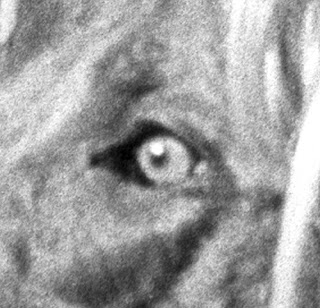Agfa APX 400 in Prescysol
Prints from scanned film aren’t quite the same as prints from conventional printing, especially considering that I have always used a diffusion head enlarger. The Nikon Coolscan picks up every grain of silver in sharp focus. So I’ll try divided D76. Still too grainy. PMK Pyro should do the job well. It not only develops the silver in the negative, it also softens the image by applying a layer of stain in the exposed areas. At least it does with Ilford FP4. But not with Agfa APX 400. There is almost no staining on the negatives. How about the old photojournalist favorite 777 developer? Better, but when you get close, it is very gritty. Someone suggested Rodinal. Although that flew in the face of logic, I gave it a shot. As I expected, the grainiest prints yet.
So the APX 400 stayed in a bag on my bedroom floor for 6 months, with another case unopened. I used TRI-X and Neopan 400 instead, and played with Foma 200 Creative. Maybe I could unload the Agfa film on eBay.
A month or so ago, I was rooting through some of my stored developers and ran across Prescysol. It had to be about 2-3 years old, and is in concentrated liquid form. I don’t know what I was thinking, but I decided to try it. TRI-X + Prescysol was a very nice combination [reviewed earlier]. Acros in Prescysol is also a very nice combination [reviewed earlier]. Bergger 200 in Prescysol was, as I expected, gritty. But in a sort of good way. So why not push my luck and try APX 400.
What bad conditions for a test roll. Early afternoon on a clear, haze-free day in blinding sunlight with lots of dark shadows. Why bother? But this was a once-a-year event, the Mystic Krewe of Barkus Parade in the French Quarter. I cringed with every shot, expecting chalk, soot, and abundant grit. No turning back.
The developed negatives looked good, at least to the unaided eye. Scanning them yielded a surprise. This notoriously sooty, gritty, grainy film yielded some nice grays and very subdued grain when developed in Prescysol. I followed the directions down to the letter, agitating only three times, letting the tank stand untouched for 3-3.5 minutes at a time. The test shots here are enlarged but not manipulated in any way. Just to convince you that the grain is well-controlled, I am including a close-up of a close-up.
I cannot imagine using any other developer with this film. I am anxious to see how this developer works with APX 100.
Labels: Agfa APX400, APX 400, Prescysol


<< Home